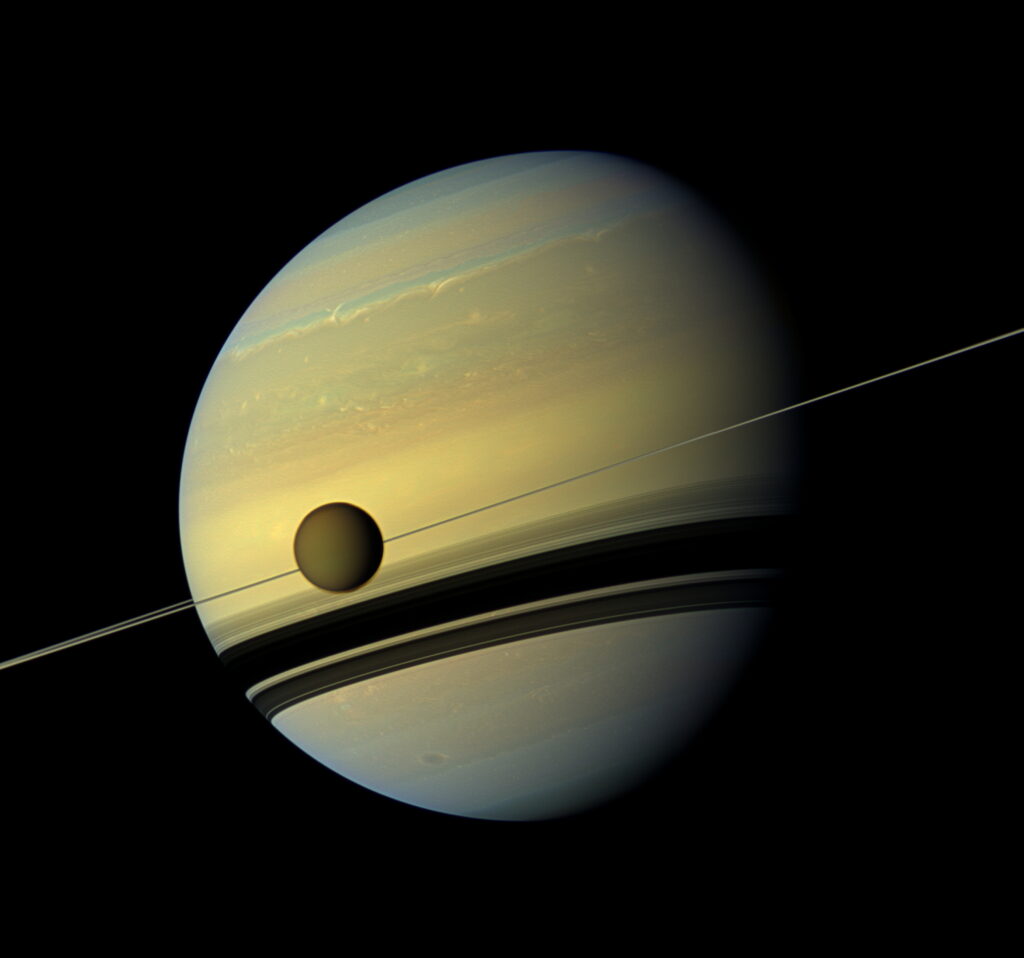By Dean Murray
This is the spacecraft that will head to Saturn.
NASA has confirmed its Dragonfly rotorcraft mission to the planet’s organic-rich moon Titan.
The space agency say the decision allows the mission to progress to completion of final design, followed by the construction and testing of the entire spacecraft and science instruments.

The rotorcraft, targeted to arrive at Titan in 2034, will fly to dozens of promising locations on the moon, looking for prebiotic chemical processes common on both Titan and the early Earth before life developed.
Dragonfly rotorcraft has eight rotors and flies like a large drone. It marks the first time NASA will fly a vehicle for science on another planetary body.
“Dragonfly is a spectacular science mission with broad community interest, and we are excited to take the next steps on this mission,” said Nicky Fox, associate administrator, Science Mission Directorate at NASA Headquarters in Washington. “Exploring Titan will push the boundaries of what we can do with rotorcraft outside of Earth.”

With the release of the U.S. president’s fiscal year 2025 budget request, Dragonfly is confirmed with a total lifecycle cost of $3.35 billion and a launch date of July 2028. This reflects a cost increase of about two times the proposed cost and a delay of more than two years from when the mission was originally selected in 2019.
Following that selection, NASA had to direct the project to replan multiple times due to funding constraints in fiscal years 2020 through 2022. The project incurred additional costs due to the COVID-19 pandemic, supply chain increases, and the results of an in-depth design iteration.
To compensate for the delayed arrival at Titan, NASA also provided additional funding for a heavy-lift launch vehicle to shorten the mission’s cruise phase.
Dragonfly is being designed and built under the direction of the Johns Hopkins Applied Physics Laboratory (APL) in Laurel, Maryland, which manages the mission for NASA.
This is Premium Licensed Content. Would you like to publish this article? Please contact our licensing team.


